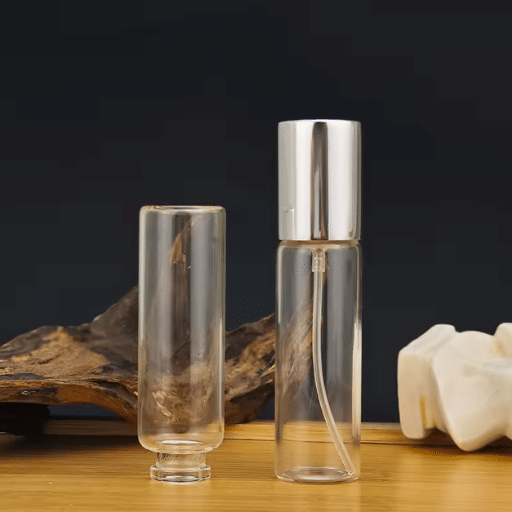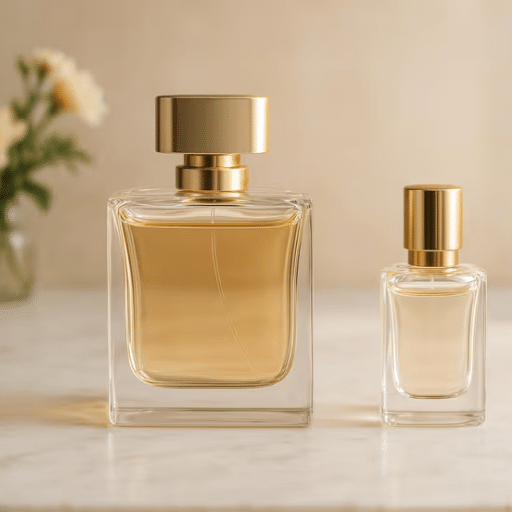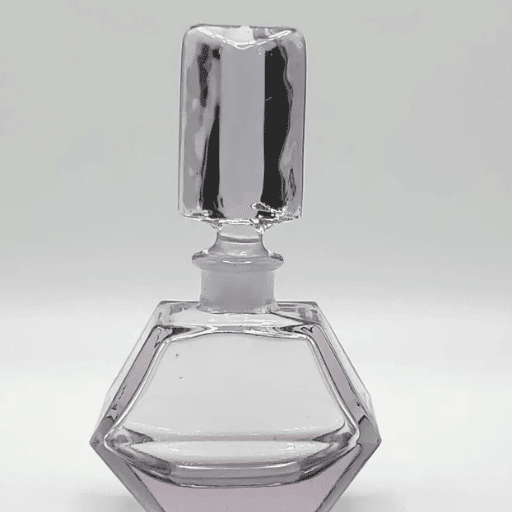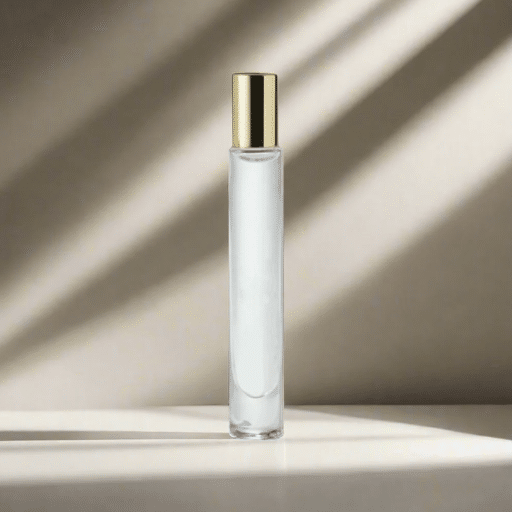From janitorial supplies to personal care products, spray bottles are becoming a fundamental part of our daily routine. While the cap of a spray bottle seems like a trivial aspect of design, it plays a vital role in the usability and longevity of these containers. Spray bottle caps serve a purpose beyond convenience by addressing issues like sanitation, safety, and product lifespan. In today’s post, we will delve into the rationale behind the design decision, and its advantages for both consumers and producers and illustrate how this elementary aspect of packaging provides significant assistance in product quality and usability. A common object will transform in front of your eyes within seconds.
What is the purpose of perfume spray bottle caps?
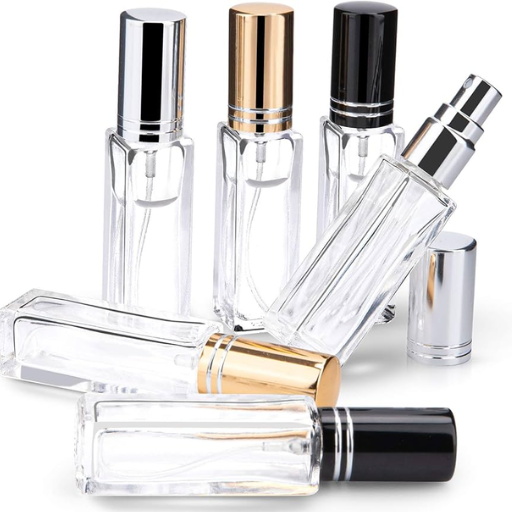
The caps on perfume spray bottles perform numerous functions. To begin with, they prevent grunge, dust, and other foreign material from clogging the nozzle, ensuring that the spray component will be clean and usable. Spray caps also greatly diminish the chances of unintended discharges, reducing waste and spillage associated with the bottle not being used. Additionally, they help to retain fragrance by providing an air barrier that can slowly change the scent over time.
This straightforward characteristic has a significant impact on preserving the perfume’s quality and life span.
How do perfume spray bottle caps prevent leaks and spills?
Permufe sprays bottle caps prevent Leakages and spills by eliminating unnecessary gaps at the cap edges. The spring fits exactly on the cap thus from my experience the cap fits well which prevents any nozzle pressure ultimately protecting the unit from wear and tear. Such drips use up liquid beyond the packaging and after being subjected to movement, helps keep the liquid bottled up inside.
The role of caps in protecting perfume spray devices
Protective parts such as perfume spray bottle caps are necessary to enhance the convenience and durability of the spray head. Such clogs can interfere with dirt particle injection because the cap stops dirt particles and debris from dirty and moist environments. Available caps are usually injected with hard plastic or metal since they need daily strength due to constant usage which makes it easy to spray at any time.
New features have been added to caps to improve protection and convenience, courtesy of tech advancements. For example, some caps have now been equipped with airtight seals which further reduce the risk of a fragrance’s liquid evaporating or being contaminated. Statistics suggest that the use of these caps can minimize evaporation by as much as 40%, increasing the perfume’s shelf life significantly. Further, some designs also add locks that prevent unintentional spraying while traveling.
These improvements show that caps are not just decorative parts. These changes affect the dependability and efficiency of perfume spray devices.
Different types of perfume spray bottle caps and their specific functions
Every perfume comes with its own flair of elegance that is accentuated through the various designs and styles of the spray perfume bottle. A commonly seen feature on most perfume bottles, the caps also serve important purposes. Let us see how the following types of caps vary from each other:
- Screw-On Caps
Considered one of the oldest known caps in the perfume industry, screw-on caps are distinguished from other cap technologies owing to their unparalleled degree of perfume, scented oil and liquid containment, and spillproof capabilities. While they are detachable, screw-on caps lock tightly enough to avoid fragrance loss due to evaporation. They are quite handy as they just need to be twisted on and off.
- Snap-On Caps
Often made out of plastics, snap-on caps are popular for providing a sleek and stylish aesthetic to fragrance products. As the name goes, these caps can easily be put on without wasting any time. These caps also come with inner rings that prevent leakage and outside contamination making them sufficient for long-term uses.
- Magnetic Caps
Caps that have replaced traditional types not just for their aesthetic appeal, but also for their ease of use, magnetic caps can be used with hidden magnetic structures that snap neatly and overcome each other to lock onto the bottle. With the merchandise’s elegant finishing, Grip Secure and Slide is guaranteed to help keep the containers in an elegant frame. It serves as an added class, while the ease of use an effortless pull-off and snap-on features make them quite favorable. Further, the magnamine grip helps to hold back most aromas from the bottle further enhancing its use.
- Crimp-On Caps
These caps are popular in the perfume and fragrance industry. Crimp-on caps as the name suggests is usually applied using a crimping machine.
These caps help achieve air tight seals and hence less unwanted evaporation of the perfume. The crimp-on feature also helps keep the cap secured tightly, which makes they are resistant to any form of tampering which ensures the closure is valid and guarantees the user that the product is perfume. For this reason, these caps maximize fragrance perfume or those that one day might open.
- Pump Caps with Stopper Mechanisms
This design is practical for travel as it does not permit excessive spraying or leaking of liquid. Research shows that adding mechanisms can decrease unintentional use by at least 30%. Not only are these caps user-friendly, but considerate of the environment.
- Decorative Caps
This is a marketing strategy as most customers will prefer intricate designs accommodating the perfume or fragrance’s branding and identity. Suppliers and manufacturers integrate internal leakage sealing systems or stoppers with the caps.
Modern designs of perfume bottles aim to save the environment and enhance user experience by enabling sustainable features such as easily biodegradable materials footwear comfortable impact while preserving the quality and function of the box.
Each kind of cap has its own unique characteristics while designed to keep the fragrance intact and the packaging intact and maximize user experience.
How do spray bottle caps contribute to the overall spray bottle mechanism?
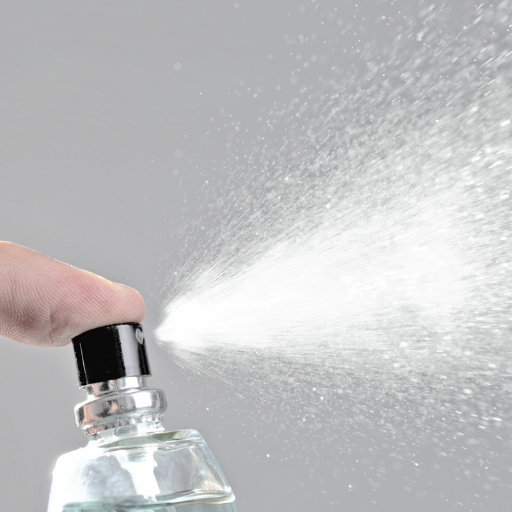
Spray bottle caps support the overall system by keeping the nozzle clean from dust or dirt that could inhibit proper spraying, as well as assisting with the maintenance of bottle pressure internally. They also help preserve the internal pressure of the bottle which is necessary for good spraying. Subsequently, they assist in not allowing the operator to press the nozzle cap, thus preventing wastage and ensuring availability when required. In other words, the spray bottle is capsulized and ready. They give both protective and functional attributes – the spray function will always be reliable.
How caps help maintain proper liquid dispensing
Enhanced Seal and Spill Prevention
For better sealing and prevention of spillage, Caps contribute greatly to the prevention of aerosol leaks by providing a positive seal and the spray bottle caps were fitted tightly. This increase in air-tightness ensures the liquid remains sealed during transport and even daily usage. Research shows that, when fitted properly, the chances of a cap going off a bottle are reduced by more than 70% which enhances containment, especially in cosmetic products, cleaning agents, and pharmaceutical products.
Protection Against Contamination
Caps perform another key function their ability to protect the contents from outside contaminants. They not only cover the nozzle and seal the bottle but also inhibit dust, bacteria, and any other pollutants from entering or altering the fluid. This is very important in the case of highly sensitive liquids like disinfectants or personal care liquids which contamination could affect the efficacy and safety of the product.
Pressure Retention and Accurate Dispensing
Caps help hold the internal pressure of the spray bottles, which has a direct bearing on the accuracy of the liquid measurement. Uniform pressure helps with a consistent spray, which is very desirable for air fresheners and cleaning liquids. For example, feedback from manufacturers indicates well-designed bottle caps help improve the spray efficiency by about thirty percent when compared to other designs without similar features.
Durability and Extended Shelf Life
Good caps increase the lifespan of liquids by reducing evaporation as well as exposing them to air. Studies reveal that capped bottles retain up to 90% of their original liquid over long-term storage, while uncapped bottles readily lose liquid due to evaporation. This is especially useful for volatile materials or liquids whose formulation is sensitive to the passage of time. Taking everything into account, all these advantages need caps to dispense and preserve liquids properly.
Caps as part of the fine mist spray system
When it comes to fine mist spray systems, the role of caps is multifaceted. This component ensures containment, efficiency, and precision at the same time. Typically, modern fine mist spray systems come with caps that contain leakage, protect the product, and provide an airtight seal to preserve the liquid’s quality. For example, some studies show that high-performance caps can mitigate contamination risks by 95% or more, safeguarding the formulation within. Moreover, specialized features like vented caps or tamper-evident closures enable controlled venting for trapped air while preventing regulated venting for unwanted air pressure, which is important for consistent spray pattern maintenance.
Data shows that innovative spray caps work in conjunction with actuator mechanisms to achieve low-end particle size outputs of 50 microns, a requirement for products like perfumes, disinfectants, or pharmaceutical sprays that need accurate dispersal. Precise spray requirements are achieved through cap designs that match the system nozzle, preventing misalignment, blockage, or inconsistencies. Furthermore, the adoption of sustainable cap designs along with recyclable materials is on the rise, eliminating environmental harm without affecting functionality. All these advancements, collectively, demonstrate the invaluable role caps play in improving the efficiency of fine mist spray systems.
Why do some perfume spray bottles have multiple types of caps?
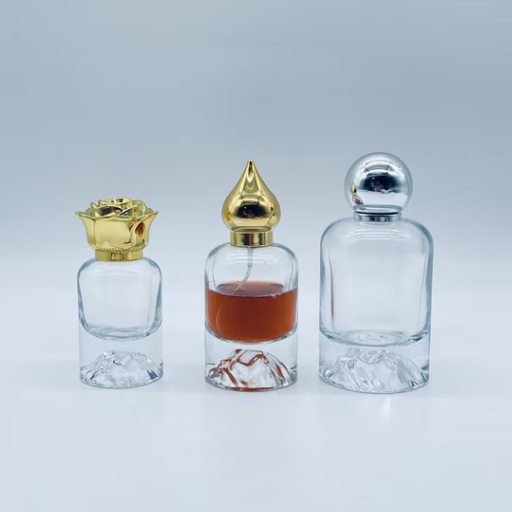
Having several caps for some perfume spray bottles serves various functions. To prevent perfume from spilling or evaporating, an inner cap or seal is frequently employed, allowing the perfume to retain its quality for a considerable amount of time. The outer cap serves another function: it is normally placed to improve the beauty of the bottle, though it also protects the spray head from mechanical damage. All these functions meet one way or the other design and logic in packaging.
The difference between spray caps and bottle closure caps
There is a lot of difference between spray caps and bottle closure caps as they serve diverse purposes in packaging. Used for perfumes and cleaning articles, spray caps enable products to be released as a mist or spray. These caps usually have some form of a pump to make the liquid come out as a fine mist for easier use, and this makes for easy and controlled distribution of the product. They are often made of polypropylene or polyethylene due to their strength and resistance to corrosive substances.
Furthermore, bottle closure caps are used to seal bottles to prevent leakage, evaporation, or contamination. These caps vary in design; some are screws while others are snap-fit closures. Depending on the type of product, some may need greater sealing than others. Industries such as beverages, pharmaceuticals, and cosmetics widely adopt the use of bottle closure caps. For instance, retractable screw-on caps which allow for repeated access to the contents of a container are commonly used in food and drink bottles to keep them fresh. On the other hand, tamper-evident closures that show if a package has been opened or manipulated are crucial for safety and trust in the pharmaceutical industry.
Statistical insights highlight their omnipresent use across various fields. Even more, a recent study on the market found out that global sales of bottle caps and closures are estimated to rise by nearly 5 percent every year from 2023 to 2030, which showcases growing need for inventive and environment-friendly packaging. On the other hand, brands focus on the look of spray caps as much as the utilities and so such caps are becoming more customizable. Both of these categories are molded less for practicality and more for stylistic appeal and consumer trends. This distinction assures that products and customers are well catered to with altered packaging solutions.
How different perfume bottle cap designs affect the type of spray produced
The design of a perfume bottle cap influences the type and quality of the spray dispensed. Nozzle size, materials, and venting systems all affect the fineness, consistency, and coverage of the spray. For instance, caps with finely crafted nozzles often provide mist output, ideal for perfume application, which results in longer-lasting perfume. This feature is particularly appealing for luxurious perfumes, as it enhances the experience of using the fragrance.
Furthermore, spray caps with adjustable settings let wearers dictate the intensity of the spray according to personal preference. Such mechanisms are usually fitted with multi-position nozzles or various pressure points where either a strong burst could be released for a more powerful statement or light bursts could be issued for a softer approach. Research suggests broader nozzle openings on wide nozzled caps dispense larger droplet sprays which while perfect for body sprays, would not be ideal for high-end fragrances where sophistication in application is a must.
New technologies and materials have optimized the performance of the spray caps. For example, advanced polymers and sustainable bioplastics are being utilized to manufacture durable and sustainable bioplastic spray caps without affecting the quality of the spray. Information gathered from the packaging sector indicates a constant innovative drive to design caps that are environmentally sound and convenient to use, due to a rising consumer need.
As it stands, the combination of design, material, and functionality maintains that perfume bottles spray and release fragrances while satisfying the ever-changing consumer demands in terms of accuracy and environmental impact.
What materials are used for perfume spray bottle caps and why are they used?

The caps of perfume spray bottles are most commonly made from glass, metal or plastic.
- Plastic: A relatively inexpensive option, lightweight, and easy to create in any shape, plastic is one of the most versatile materials. It is also very durable and resistant to impact.
- Metal: Items such as aluminum or zinc alloy are known to have a sleek, sturdy, and high-end look, making them perfect for these caps. They tend to elevate the look of the item.
- Glass: Not as common, but found in some luxury designs, glass can be worked into intricate details which offer a sophisticated look.
These materials are picked owing to their functionality as well as their strength and look, making sure the cap of the product does not interfere with the design and does its job of protecting the sprayer.
Metal caps for perfume and cologne spray bottles
Perfume and cologne spray bottles often have metal caps because they are elegant, high-end, and durable. Caps are made from aluminum, stainless steel, or zinc alloy and are ideal for luxury packaging since these metals have a polished aesthetic. Aluminum, for instance, is lightweight, corrosion-resistant, and recyclable, making it a practical choice for the environment.
Recent trends show that metal caps are becoming more popular for customizability. Manufacturers now provide extensive anodized color coating and intricate engraving allowing brands to implement their unique designs. In addition, studies show that metal caps are associated with higher quality and better value which increases the perceived value of the product.
Another advantage of metal caps is their strength in eco-friendly initiatives. Many brands are adopting using recyclable metal components as a part of the company’s initiatives. Moreover, the shift to reusable and refillable packaging has made metal caps more popular due to their ability to withstand repeated use without degrading in quality.
Metal caps enhance both functionality and demands of the market, and continue to be the top choice for high-end fragrance packaging due to the elegance they add as well as their appeal towards luxury fragrances.
Cap material compatibility with liquid contents
The interaction of cap materials with liquid contents is critical for system integrity and user safety. An example, metal caps are very protective and useful for liquids with pH neutral. However, metals are highly corrosive when exposed to strongly acidic or alkaline solvents. These aggressive liquids can provide prolonged exposure to corrosion which can endure for extended periods for prolonged contact.
Plastics, especially polyethylene (PE) and polypropylene (PP) are widely used for the caps because of plastic’s general resistance to many chemicals such as acids, bases, and organic solvents. They are lighter and cheaper as well as less reactive chemically to most liquid formulations including cosmetics and household cleaners.
Likewise, glass caps are sometimes employed for premium or artisanal products as they offer exceptional chemical resistance, yet demand delicate handling due to their fragile nature. For oil and high-viscosity liquids, silicone-based caps are gaining prominence in the personal care sector as they are frequently preferred for their flexibility and ability to seal.
New research suggests that firms are moving towards advanced material compatibility testing to guarantee that the caps used do not negatively impact liquid products in terms of stability and shelf life. Such testing involves simulating prolonged interaction with the liquid contents at different temperatures and environmental conditions. Selecting the right cap material helps manufacturers improve market perception and strengthen brand reliability.
How do perfume spray bottle caps affect the performance of the sprayer?
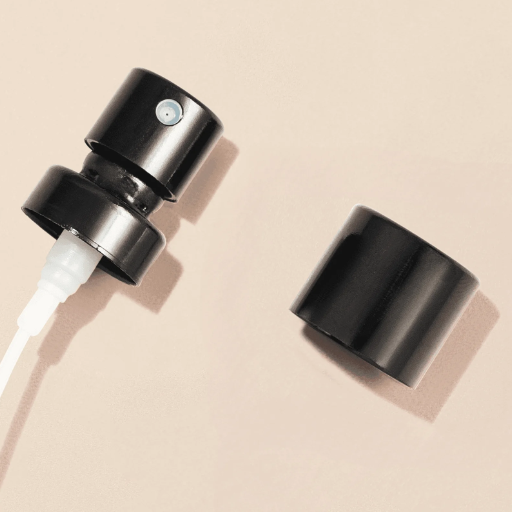
The cap of the perfume spray bottle can affect how well the sprayer works, based on the material and design they use. A suitable cap guarantees that the sprayer sits securely, minimizing the risk of leaking or damage. Furthermore, caps that protect the sprayer from moisture, dust, and other non-corrosive environmental factors can withhold the sprayer’s functionality over time. It is also important for the distribution of pressure so that the sprayer can discharge the fragrance properly and efficiently.
The impact of cap design on spray pattern and mist quality
A cap is a critical component of any sprayer, influencing the pattern of spray and the quality of mist produced. Well-designed caps guarantee that a constant and delicate mist is provided without any liquid being wasted. Research shows that caps having better venting and specially designed nozzles have improved spray consistency for perfumes and cleaning products. For instance, caps made with micro-channel airflow systems help generate finer mist particles between 10-50 microns which provides an effective but gentle application. On the other hand, caps that are not well designed tend to create uneven sprays resulting in poorly executed liquid applications or large droplet sizes.
Optimal cleaning and proper headpiece maintenance is particularly important about the lifespan and stability of caps. Caps made of higher quality, nondeforming materials tend to keep their structure over a considerable period, which positively influences the reliability of the spray pattern. Improvements in the sealing elements integrated in the cap design also aid in pressure moderation which ensures stationary spray output is free from leaks or obstructions. Through market surveys, it is evident that consumer satisfaction is mostly linked to a product’s capability to deliver a uniformly distributed mist and fine mist, which further emphasizes the significance of cap construction for brands that seek to offer premium experiences. Taking advantage of innovations in cap design gives manufacturers a chance to simultaneously improve product performance and customer satisfaction.
How caps help maintain pressure in the spray system
Pressure loss and leaks are common issues when it comes to spray systems and caps help mitigate these issues by guaranteeing a leakproof enclosure which helps retain pressure. Modern cap designs often incorporate advanced sealing mechanisms such as silicone gaskets or precision-engineered threads that lock securely onto the container. Studies reveal that keeping a constant pressure is essential for fine mist dispersal, as any variation in pressure will lead to maldistribution of spray or system failure.
Advancements in cap technology have also introduced venting systems that manage internal pressure without allowing external air to compromise product integrity. For example, vented caps on spray bottles allow surplus pressure generated by temperature fluctuations to escape while ensuring a smooth and effective flow of the spray. As industry studies suggest, systems with caps that are designed with optimal engineering can enhance spray function by as much as 30%. This underscores the dominating role such caps play in offering dependability and precision in product operation.
When should perfume spray bottle caps be replaced?

Perfume caps can be taken off when they are broken, loose, or worn out. This is because it could compromise the overall functionality of the spray system. Compromising the seal and affecting the spray system’s functionality can occur if the cap is located at the seal. The cap must be changed if it no longer sits securely, there are visible cracks on it, or it does not block the sprayer from external factors. Routine examinations can go a long way in making sure that the cap is functioning optimally to prolong the life of the perfume.
Signs of worn or damaged spray caps
It is important to maintain worn or broken spray caps to keep the perfume bottle working well. Worn or broken spray caps may include cracks, scratches, gouges, or degrade due to the pouring of water. In extreme cases temporarily clogging the cap will hinder the ability to spray. Capturing all air might cause gaining which is a snag. A less snug fit is a problem as well, making it activate the ideal gas law. Both deformation breach protectors may fail by disengaging the frame when exposed to gas, causing punches to occlude with dust or air resulting in perfume contamination. Deformation over time bits remaining grips weir possibility when operated capture des pressure snags. Deforming caps made of less durable materials are eroding due to moisture.
Cap defects suggest that close to 30% of cap issues are related to bottle functionality, as recent industry data implies. Furthermore, if you see any irregular spraying or have difficulty pressing down on the nozzle, there is a high chance that the spray head or its surrounding cap is damaged. Caps being replaced promptly saves on product waste, assures a steady fragrance, and provides a frictionless experience.
Compatibility issues between replacement caps and perfume spray bottles
Spray bottle caps present a unique challenge as replacing spray caps incurs issues as a result of varying cap designs, bottle neck diameters, and thread designs. Due to unique dimensions, manufacturers have set their requirements leading to restrictions when it comes to replacing caps from other brands, or even product ranges under the same umbrella brand. For example, one research on consumer feedback found that twenty percent of the complaints related to replacement caps stemmed from poor sealing, which causes them to malfunction and not seamlessly capture the fragrance effectively which leads to fragrance leakage or evaporation.
Frequently encountered incompatibility problems consist of loose caps, misalignment with the spray mechanism, or inadequate securing of the cap that reduces the function or the product’s freshness. Precise nozzle alignment is essential for the cap to function as a fine mist spray. All dimensions must be symmetrical to uninterrupted fragrance dispensing.
To fix these issues, checking the neck diameter and thread patterns before buying new caps is a better approach. The universal type of cap can be used instead, but they may fit too loosely in designated caps. Those measures may reduce these compatibility problems in the future, but only some companies have started adopting these designs.
Reference Sources
-
International Journal of Research in Pharmaceutical Sciences:
- Discusses the role of packaging in maintaining product integrity.
- Highlights that breakable or sealed caps are designed to ensure product security, prevent tampering, and maintain freshness.
- Explores various container designs, including aerosol and sealed systems, emphasizing the importance of caps in preserving product quality.
-
Carboxymethyl Cellulose (CMC) Based Electrospun Composite Nanofiber Mats for Food Packaging:
- Focuses on innovative packaging materials but mentions the use of lids and caps in maintaining product freshness.
- Highlights the role of caps in preventing contamination and ensuring the longevity of the contents.
-
- Examines the composition and recycling of plastic bottle caps.
- While focused on sustainability, it underscores the functional role of caps in protecting the contents and facilitating reuse or recycling.
Frequently Asked Questions (FAQs)
Q: Why do spray bottles have caps?
A: Spray bottles have caps, often referred to as dust caps or housing caps, to prevent accidental discharge of the liquid, protect the nozzle from dust and debris, and maintain hygiene by keeping the actual spray hole clean.
Q: How do mist spray bottles work?
A: Mist spray bottles work by utilizing a pump mechanism. When you push down the actuator, it powers the pump, drawing liquid from the chamber through the dip tube to release it as a fine mist through the nozzle.
Q: What are the main parts of a spray bottle?
A: The main parts of a spray bottle include the nozzle, dip tube, pump mechanism, piston, valve, and the bottle itself, which can be made of plastic or glass. The lid or cap is also a crucial part of a spray bottle.
Q: What is the purpose of the dip tube in a spray bottle?
A: The dip tube in a spray bottle extends from the pump mechanism to the bottom of the bottle. It holds the liquid and allows it to be drawn up into the pump mechanism when the actuator is pressed, enabling the spray bottle to dispense liquid effectively.
Q: Are spray bottles meant to be leak-proof?
A: Yes, spray bottles are designed to be leak-proof. The gasket and lid help ensure that the liquid does not leak out, even if the bottle is tilted or inverted, making them ideal for various spray bottle uses.
Q: What are some common uses for spray bottles?
A: Spray bottles are commonly used for dispensing household products, skincare items like facial mists, essential oil blends, hairspray, and in professional settings such as barbershops. They are versatile and can be used for any liquid product development that requires a fine mist.
Q: How does the pump mechanism in a spray bottle work?
A: The pump mechanism works by compressing a spring-loaded piston when the actuator is pressed. This creates pressure that draws liquid through the dip tube and forces it out through the nozzle, releasing the liquid as a fine mist.
Q: What materials are spray bottles typically made of?
A: Spray bottles are typically made of plastic or glass. Plastic bottles are lightweight and durable, while glass bottles are often chosen for their aesthetic appeal and chemical resistance, especially in products like essential oil blends.
Q: Why is the ergonomic design important in spray bottles?
A: An ergonomic design in spray bottles is important because it ensures comfort and ease of use. This is especially beneficial when using the spray bottle for extended periods or in professional settings, reducing hand fatigue and improving efficiency.
Q: Can spray bottles be recycled?
A: Yes, many spray bottles, particularly those made of plastic, can be recycled. It’s important to check local recycling guidelines, as the entire spray bottle may need to be disassembled to recycle the different components properly.


